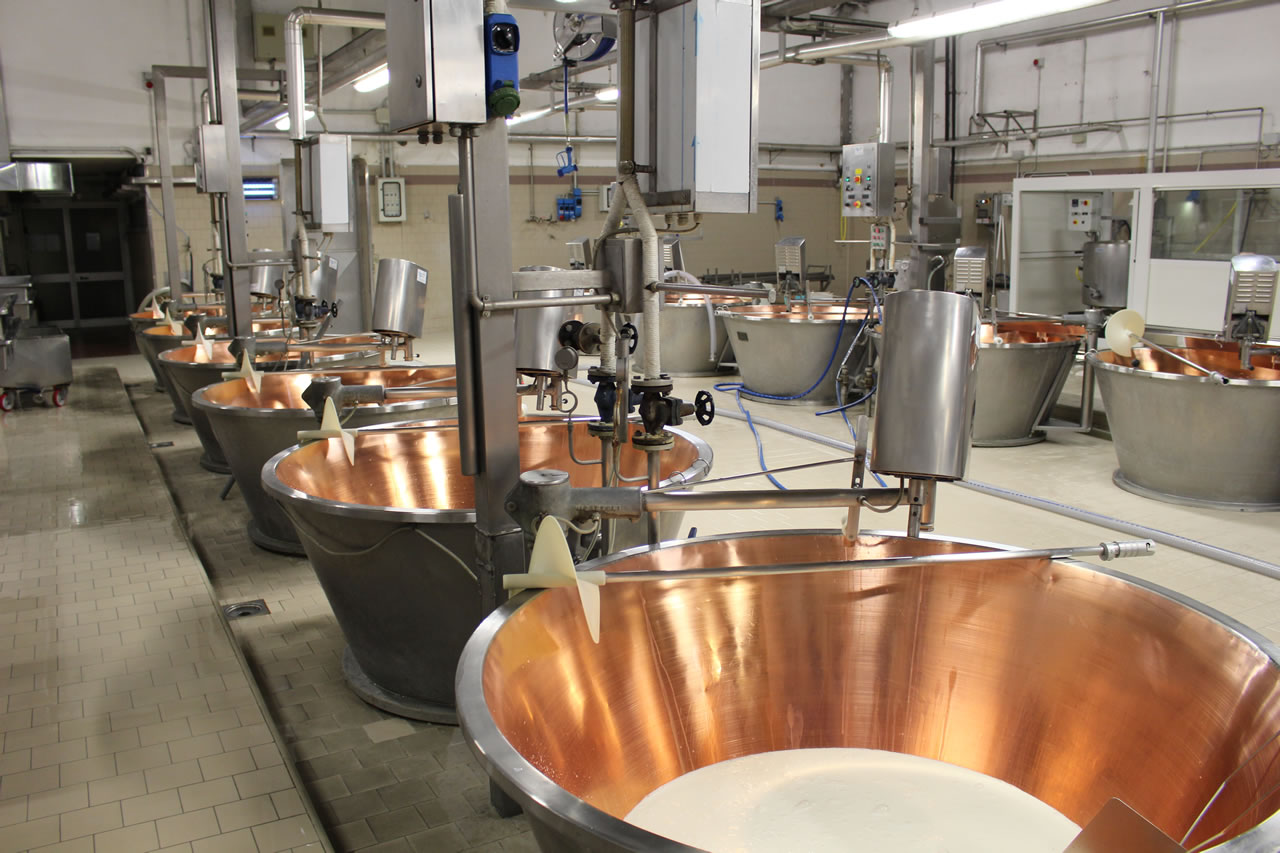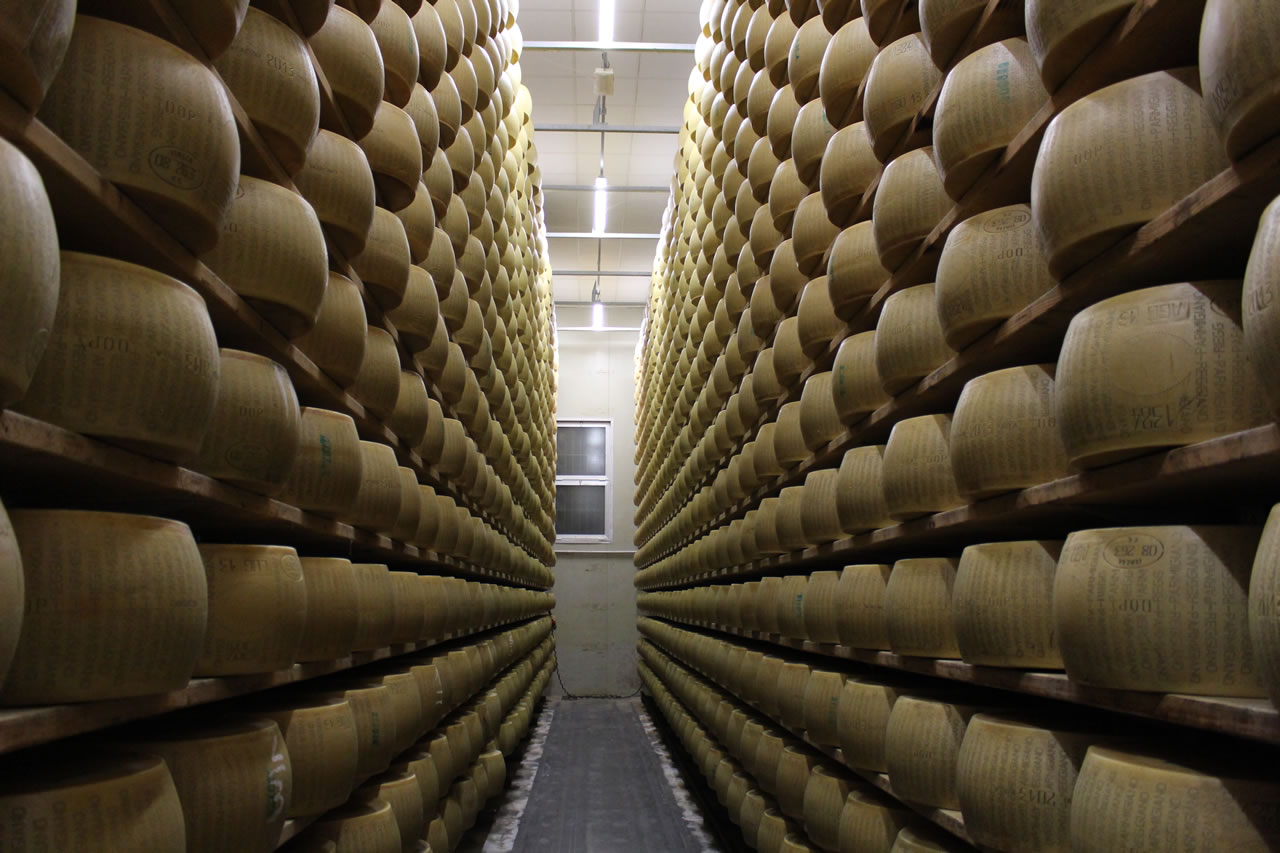It all begins after evening milk collection in the farms, pumped into large tanks and left there all night until the next morning. This means that the cream will emerge at the surface, leaving behind skimmed milk. At a later time, the skimmed milk is extracted from the bottom of the tanks and is distributed by filling half of the boilers. The remaining half of each boiler is then filled with whole milk, collected from the morning milking. So the milk processed is a semi-skimmed milk. The remaining cream is kept aside for the processing of the butter.
Once the typical copper boilers inverted bell shaped have been filled, we start to mix the milk, heating it through the use of steam. The milk is enriched by the cheese maker with natural rennet, previously dosed with extreme care and with serum which acts as a graft: the coagulation occurs and the curd is formed. Then the curd is fragmented by master cheese maker in tiny beads as big as a grain of rice, using an old tool called spino.
After the “spinatura”, a slow cooking begins and inside the boiler the temperature reached is of about 55° C. At this stage the cheese maker, touching the curds, is able to analyze its rib and decide when it’s time to stop cooking, allowing the caseous granules to precipitate on the bottom of the boiler. By this process we get a mass which produces 2 forms of cheese, each of which requires about 600 liters of milk.
From the bottom of the boiler, the mass is removed and raised, being careful not to break it, then hung and left to rest using a canvas and finally with a knife is divided in two symmetrical parts. Using a forklift, the pieces are placed inside the “fascere” (molds), always remaining well enwrapped in canvases. After placing above them a burden, they are taken to the rest room to drain excess fluid.
A casein plaque is assigned to every form created with a unique progressive number which acts as the identity card of Parmigiano Reggiano DOP. Then with a special marking band the month and year of manufacture , the serial number that characterizes the dairy and the unmistakable written in dots on the entire circumference are engraved.
Forms, after a few days, are immersed in a saturated solution of water and salt: it’s a process of salting by osmosis. Here they remain for about twenty days. With this final step, the production of Parmigiano Reggiano ends and the seasoning starts. The forms of Parmigiano Reggiano are arranged in long rows and left to rest on wooden planks. In this way, the outer part of the cheese dries forming a natural rind.
The minimum maturing period is 12 months and it’s at that point that only the forms which pass the selection exam can continue the seasoning for 24 months and beyond. The moment of selection and certification is very important for consumers because it is absolute guarantee of the authenticity of the product. The Consortium experts examine all forms of Parmigiano Reggiano and, only after a positive verification, fire stamp is applied on forms that have the requirements of the protected designation of origin.
Extremely nutritionally rich , Parmigiano Reggiano excels in all respects: a triumph of tastes without sacrificing the joy of healthy eating.
Watch the video we created to show you our production chain: from milk to cheese.



